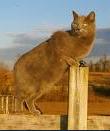For 1,300 years the treasure lay undisturbed, and eventually the landscape evolved from forest clearing to grazing pasture to working field. Then treasure hunters equipped with metal detectors—ubiquitous in Britain—began to call on farmer Fred Johnson, asking permission to walk the field. "I told one I'd lost a wrench and asked him to find that," Johnson says. Instead, on July 5, 2009, Terry Herbert came to the farmhouse door and announced to Johnson that he had found Anglo-Saxon treasure.
The Staffordshire Hoard, as it was quickly dubbed, electrified the general public and Anglo-Saxon scholars alike. Spectacular discoveries, such as the royal finds at Sutton Hoo in Suffolk, had been made in Anglo-Saxon burial sites. But the treasure pulled from Fred Johnson's field was novel—a cache of gold, silver, and garnet objects from early Anglo-Saxon times and from one of the most important kingdoms of the era. Moreover, the quality and style of the intricate filigree and cloisonné decorating the objects were extraordinary, inviting heady comparisons to such legendary treasures as the Lindisfarne Gospels or the Book of Kells. The rest of the National Geographic article here.
Subscribe to:
Post Comments (Atom)


























































No comments:
Post a Comment